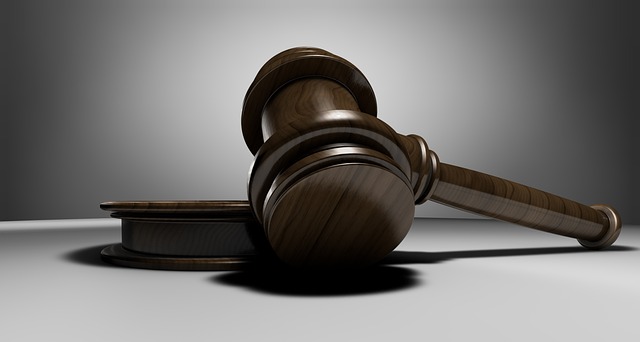Bike Lane Accident Lawyer: Navigating Court Proceedings for Justice

Bike lane accident lawyers are essential in securing justice for injured cyclists, leveraging their…….
In an era where cycling is gaining popularity as a sustainable mode of transportation and recreational activity, ensuring the safety of cyclists has become a paramount concern. This is where the role of a bike lane accident lawyer becomes pivotal—they are the legal advocates who represent and protect the rights of individuals involved in accidents within designated bike lanes. These lawyers play a crucial part in holding responsible parties accountable, seeking compensation for injuries, and promoting safer cycling environments. In this comprehensive article, we will delve into the world of bike lane accident law, exploring its various facets, impacts, and the intricate work these legal professionals undertake.
A bike lane accident lawyer is a legal professional specialized in handling cases arising from bicycle accidents that occur within bike lanes or on public cycling infrastructure. These lawyers advocate for cyclists who have sustained injuries, property damage, or other losses due to negligence or intentional acts by others. Their primary goal is to ensure that their clients receive fair compensation and that the responsible parties are held liable for their actions.
Designated bike lanes are critical components of urban transportation systems, promoting cycling as a clean, healthy, and efficient mode of mobility. However, these lanes also present unique risks when accidents occur. Bike lane accident lawyers address several key issues:
The concept of bike lane accident law has spread globally, reflecting a growing recognition of cycling’s importance in sustainable urban development. Each country approaches legal representation for cycling accidents differently, influenced by local cultural norms, transportation policies, and legal frameworks. Here’s a glimpse into some regional trends:
Europe: Many European countries have robust cycling cultures and well-established legal systems to protect cyclists. The Netherlands, known for its cycling-friendly infrastructure, has a strong tradition of lawyer representation in bicycle accidents. Germany, with its strict traffic laws, offers comprehensive legal protection for cyclists.
North America: In the United States, individual states have varying levels of legal support for bike lane accident victims. California, with its extensive network of bike lanes, has seen an increase in cycling-related lawsuits. Canada, too, is witnessing a rise in cyclist injuries and subsequent legal actions, prompting discussions on improving road safety.
Asia: Cities like Tokyo and Seoul have dedicated bike lanes but also face challenges with dense traffic and varying levels of driver awareness. Japan has a well-developed legal system for cycling accidents, while South Korea is working to improve its legal framework in this area.
Several global trends are influencing the development of bike lane accident law:
Growing Cycling Adoption: The increasing popularity of cycling as a mode of transportation and leisure activity has led to more cyclists on the road, resulting in a higher frequency of accidents. This trend drives the demand for specialized legal services.
Urbanization and Infrastructure Development: Rapid urbanization is leading to the expansion of urban cycling networks, but inadequate infrastructure can create new safety challenges. Lawyers play a crucial role in advocating for safer bike lane designs.
Technological Advancements: The integration of technology into cycling equipment and vehicles offers both benefits and legal complexities. Bike lane accident lawyers must stay updated on issues like e-bike regulations and smart city technologies.
The bike lane accident lawyer market is influenced by several economic factors:
Governments and private entities invest in cycling infrastructure, including bike lanes, to promote sustainable transportation. Bike lane accident lawyers contribute to these investments’ success by ensuring that cyclists are protected under the law. Effective legal representation can lead to better safety standards, reducing future accident risks and associated costs.
The rise of smart cities has brought technological advancements to cycling infrastructure, including:
Technological innovations in cycling equipment offer improved safety features:
Different countries have varying legal frameworks for cycling accidents, reflecting their unique cultural and political contexts:
Bike lane accident lawyers navigate through several legal considerations:
Bike lane accident lawyers encounter several challenges in their practice:
To address these challenges, bike lane accident lawyers employ various strategies:
Amsterdam, known for its vibrant cycling culture, faced a surge in cycling accidents due to increasing traffic congestion. In response, local bike lane accident lawyers and cycling advocates collaborated with city officials to push for legal reforms. This partnership led to the implementation of stricter driver licensing requirements, enhanced traffic enforcement, and improved bike lane design, resulting in a significant reduction in cycling injuries and deaths.
Germany’s rapid adoption of electric bicycles (e-bikes) presented new legal challenges. Bike lane accident lawyers in Berlin successfully argued for clear product liability guidelines, ensuring that e-bike manufacturers and retailers are held accountable for defects that contribute to accidents. This case set a precedent for other European countries grappling with the rise of e-bikes.
In San Francisco, bike lane accident lawyers played a crucial role in advocating for data privacy regulations regarding smart city technologies. As connected vehicles and bike lane monitoring systems became more prevalent, concerns about data collection and usage arose. Lawyers worked with local legislators to pass laws ensuring that cyclist data is protected and [date].
The impact of bike lane accident law extends far beyond individual cases, shaping urban mobility and cycling culture worldwide. Here are some key global trends:
Growing Cycling Popularity: Cycling as a mode of transportation and recreation has seen a significant surge globally, leading to increased demand for dedicated bike lanes and legal protection for cyclists.
Urban Cycling Infrastructure: Many cities, particularly in Europe and North America, are investing heavily in cycling infrastructure, including extensive networks of bike lanes and safe intersections. This trend is driven by environmental concerns, traffic congestion, and health initiatives.
Legal Awareness and Advocacy: As cycling communities gain momentum, so does awareness of cyclist rights. Bike lane accident lawyers play a pivotal role in advocating for safer roads and legal protections, leading to more comprehensive bike lane regulations.
International Collaboration: Global organizations like the World Health Organization (WHO) and various transportation authorities are collaborating to promote cycling safety. They share best practices, research findings, and guidelines, fostering a more unified approach to bike lane accident law.
The economic aspects of bike lane accident law are multifaceted, affecting both the legal profession and the broader cycling industry.
Legal Services Demand: The increasing popularity of cycling and urban mobility leads to a higher demand for specialized legal services, creating opportunities for bike lane accident lawyers.
Insurance and Risk Management: As more cyclists take to the road, insurance companies are adjusting their policies and rates. Lawyers can assist clients in navigating these changes and ensuring fair compensation.
Economic Impact on Cities: Well-designed bike lanes and safe cycling infrastructure can significantly reduce traffic congestion, leading to cost savings for cities. Effective legal frameworks can encourage responsible cycling behavior, further enhancing urban mobility.
Tourism and Recreation: Cycling tourism is a growing industry, with many destinations promoting bike-friendly attractions. Bike lane accident law plays a crucial role in ensuring the safety of recreational cyclists, contributing to local economies.
Technology is at the forefront of cycling safety improvements, offering both opportunities and challenges for bike lane accident lawyers. Here’s a glimpse into the future:
Advanced Safety Features: Bicycles equipped with sensors, GPS, and smart technology can provide real-time data on rider behavior, road conditions, and potential hazards. This raises new legal considerations regarding data privacy, liability, and product responsibility.
Connected Vehicles and Infrastructure: The integration of vehicles and cycling infrastructure through connected technologies promises safer roads. Lawyers will need to adapt to these changes, addressing issues like vehicle-to-bike communication protocols and smart traffic signal interactions.
AI-Assisted Lawyering: Artificial Intelligence (AI) can assist in legal research, case prediction, and document review, streamlining bike lane accident lawyer practices and improving efficiency.
Telematics and Data Analysis: Telematics devices installed on bicycles or vehicles can provide detailed data on accidents, offering insights for lawyers to strengthen their cases and advocate for better road safety measures.
The policy landscape for bike lane accident law is dynamic, with governments and international organizations setting the tone for cycling safety.
Global Guidelines and Standards: Organizations like the WHO and the United Nations (UN) provide guidelines for urban mobility, including cycling infrastructure and safety standards. These guidelines influence local policies and legal frameworks.
Local Initiatives: Many cities are implementing innovative solutions to promote cycling safety. For example, Amsterdam’s comprehensive approach to cycling infrastructure and culture has inspired similar initiatives worldwide.
Regulation Evolution: As technology advances, so do regulations. Lawyers must stay abreast of changing rules regarding e-bike registration, helmet requirements, and smart traffic signal interactions to provide effective legal counsel.
Bike lane accident lawyers face several challenges and criticisms in their pursuit of justice and safety for cyclists.
Underreporting and Stigma: Cycling accidents often go underreported due to fear of liability or a culture of blaming riders. Lawyers must combat this stigma, encouraging victims to come forward and seek legal redress.
Complex Legal Landscape: The varying legal frameworks across jurisdictions can be confusing and challenging for lawyers to navigate. Standardization of bike lane accident law at the international level could improve consistency and access to justice.
Industry Influence: Critics argue that insurance companies and vehicle manufacturers may lobby against stringent safety regulations, potentially hindering progress in bike lane accident law. Lawyers can play a crucial role in holding these industries accountable.
Public Awareness and Education: Raising public awareness about cyclist rights and responsibilities is essential. Lawyers can collaborate with community groups and educational institutions to foster a culture of safe cycling practices.
The world of bike lane accident law is dynamic, evolving with technological advancements, changing policies, and growing cycling communities. Bike lane accident lawyers are at the forefront of this transformation, advocating for safer roads and legal protections for cyclists worldwide. As cities continue to invest in cycling infrastructure and urban mobility initiatives, the role of these lawyers becomes increasingly vital.
By staying informed about emerging trends, technologies, and policies, bike lane accident lawyers can effectively represent their clients, promote positive change, and contribute to a future where cycling is a safe and accessible mode of transportation for all. The journey towards safer roads and communities is a collective effort, with bike lane accident law serving as a critical component in achieving this goal.

Bike lane accident lawyers are essential in securing justice for injured cyclists, leveraging their…….

Bike lane accident lawyers are crucial advocates for cyclist safety, handling complex legal cases in…….

Bike lane accidents can cause serious harm to cyclists, driven by driver negligence and inadequate i…….

Bike lane accidents pose significant risks to cyclists, caused by driver ignorance, distraction, and…….

Bike lane accidents can cause severe injuries, property damage, and significant financial losses for…….

Bike lane accident lawyer expertise is crucial for cyclists injured in accidents. Time is critical&m…….

Bike lane accident lawsuits require specialized legal expertise due to their complexity involving tr…….

Bike lane accidents require specialized legal expertise due to unique challenges, including vehicle-…….

A bike lane accident lawyer is a vital resource for cyclists injured or affected by wrongful death i…….